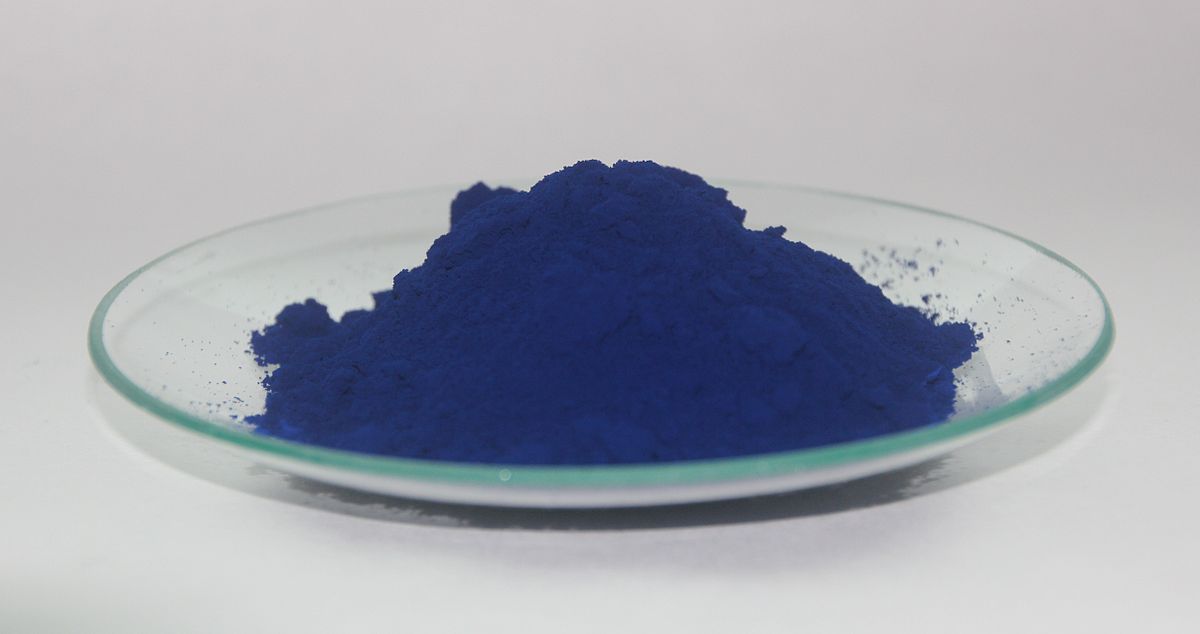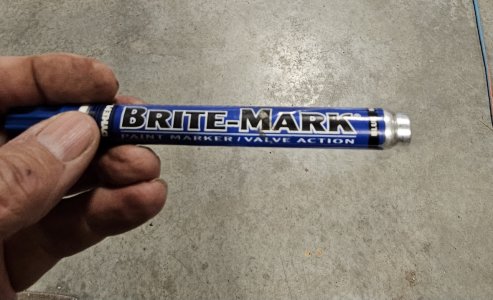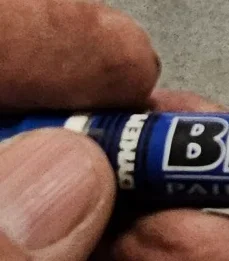-
Scam Alert. Members are reminded to NOT send money to buy anything. Don't buy things remote and have it shipped - go get it yourself, pay in person, and take your equipment with you. Scammers have burned people on this forum. Urgency, secrecy, excuses, selling for friend, newish members, FUD, are RED FLAGS. A video conference call is not adequate assurance. Face to face interactions are required. Please report suspicions to the forum admins. Stay Safe - anyone can get scammed.
-
Several Regions have held meetups already, but others are being planned or are evaluating the interest. The Calgary Area Meetup is set for Saturday July 12th at 10am. The signup thread is here! Arbutus has also explored interest in a Fraser Valley meetup but it seems members either missed his thread or had other plans. Let him know if you are interested in a meetup later in the year by posting here! Slowpoke is trying to pull together an Ottawa area meetup later this summer. No date has been selected yet, so let him know if you are interested here! We are not aware of any other meetups being planned this year. If you are interested in doing something in your area, let everyone know and make it happen! Meetups are a great way to make new machining friends and get hands on help in your area. Don’t be shy, sign up and come, or plan your own meetup!
You are using an out of date browser. It may not display this or other websites correctly.
You should upgrade or use an alternative browser.
You should upgrade or use an alternative browser.
Supplies Dykem blue
- Thread starter joefrombc
- Start date
Supplies
Doggggboy
Ultra Member
Dykem Brite-Mark® Paint Markers - Blue S-21125BLU - Uline
Bright permanent marks for harsh outdoor environments. Durable oil-based paint stands up to UV rays. ULINE offers over 43,000 boxes, plastic poly bags, mailing tubes, warehouse supplies and bubble wrap for your storage, packaging, or shipping supplies.
looks like Dykem to me.
Ya, but it doesn't say it in bold letters like it does on the can with the
I suspect that years of making model airplanes in a shed with no windows has altered my perception of what constitutes a good smell. I really like the smell of Dykem (but I’m not going to artificially apply it, it has to be Dykem used “in the wild).I like it more than layout
Of course I like eating Vegemite too, so the bar is set pretty low.
Last edited:
Can someone help me to learn how exactly this compound is supposed to be used? Maybe an article or youtube link if its to long of an explanation?
The simple version is that it's applied to a surface and dried. Then a sharp marker can scratch it to show very clearly where to cut or machine.
There is also a prussian blue paint that is applied and used to check for good fits such as tapers. Dykem is too thick to use for checking fits. Prussian blue smears to much to take a good mark.
Guessing you don't need pictures or YouTube now.
Can someone help me to learn how exactly this compound is supposed to be used? Maybe an article or youtube link if its to long of an explanation?

This is a DRO scale mounting bracket I made for my mill. It's made of 1/4" aluminum plate. I laid out the required shape using layout fluid and a scribe (pointy instrument). The layout fluid makes the scribe marks highly visible. I then cut the bracket out by following the scribe lines.
Does that make sense?
Last edited:
So two different functions?
A layout function where you 'paint' the surface and then scribe away that paint on the lines that you want to cut etc. Presumably it is easier to make these scribe marks in the 'paint' than in the metal itself. And the colour makes the lines easier to see than just scratches?
And a fit function where you use the fluid to show the groves / lands (high and low places) in a fitting that should be flush all over? Again, the colour making everything easier to see?
A layout function where you 'paint' the surface and then scribe away that paint on the lines that you want to cut etc. Presumably it is easier to make these scribe marks in the 'paint' than in the metal itself. And the colour makes the lines easier to see than just scratches?
And a fit function where you use the fluid to show the groves / lands (high and low places) in a fitting that should be flush all over? Again, the colour making everything easier to see?
So two different functions?
A layout function where you 'paint' the surface and then scribe away that paint on the lines that you want to cut etc. Presumably it is easier to make these scribe marks in the 'paint' than in the metal itself. And the colour makes the lines easier to see than just scratches?
And a fit function where you use the fluid to show the groves / lands (high and low places) in a fitting that should be flush all over? Again, the colour making everything easier to see?
No. Layout fluid is not used to check fitment. Prussic blue and others are for checking fitment. It's more of a paste than a liquid.
they are totally different fluids then?
Yes, two different things. One is a fluid the other a paste. They both tend to be the color blue however.
Last edited:
Thanks - as I was reading this I assumed that they were two different brands of the same thing. Now it makes a lot more sense!
And just to add to the confusion, a lot of folks find a felt marker or sharpie a good substitute for layout fluid.
I was also trying to work out how a sharpie could help find land / grove (high / low) fit mismatches. At best it can smudge the high spots I think. But to provide or highlight layout marks, that would be a very good tool i think. Scribe it in the metal and then highlight it with a marker
What makes it confusing is Prussian blue is basically a color. Its like saying crimson or purple. The use of the minerals in pigments & inks go back a long, long time. You'll see it named in any artist paints color set. Apparently the name Prussian blue originated in the 18th century, when the compound was used to dye the uniform coats for the Prussian army. Over the years, the pigment acquired several other “blue” names, including Berlin, Parisian, and Turnbull's blue.

 en.wikipedia.org
en.wikipedia.org
Maybe a better way to classify is 'layout' or 'transfer'. Layout means an opaque, quick dry coating on the metal to allow you to scribe very thin but distinguishable lines via the shiny contrasting metal color. The typical stuff is alcohol based, so dries relatively quick & (mostly) withstands cutting oils. Comes off readily with methanol. You can also get in aerosol for larger areas. You can also get red or a few other colors Sharpies serve the same purpose, handier & faster drying for smaller areas.
 www.kbctools.ca
www.kbctools.ca
Transfer is also known as 'high-spot'. Typically its a greasy oil based cream viscosity, but now there are water based & other formulations. I don't think it really dries, or if it does, over a very long time. Its used in scraping where you roll it on a surface, for example the granite surface plate, rub a part on it. What transfers off to the part are the highs or hilltops to be scraped. Or similarly any 2 surfaces where one is considered a master, say a bearing & shaft assemblies. Sharpies also work here, but generally smaller parts. But you don't use transfer medium as a layout medium or vise-versa.
Prussian blue - Wikipedia
Maybe a better way to classify is 'layout' or 'transfer'. Layout means an opaque, quick dry coating on the metal to allow you to scribe very thin but distinguishable lines via the shiny contrasting metal color. The typical stuff is alcohol based, so dries relatively quick & (mostly) withstands cutting oils. Comes off readily with methanol. You can also get in aerosol for larger areas. You can also get red or a few other colors Sharpies serve the same purpose, handier & faster drying for smaller areas.
STARRETT,STARRETT 4oz KLEENSCRIBE LAYOUT DYE,1-855-53212,KBC Tools & Machinery
STARRETT,STARRETT 4oz KLEENSCRIBE LAYOUT DYE,1-855-53212,KBC Tools & Machinery
Transfer is also known as 'high-spot'. Typically its a greasy oil based cream viscosity, but now there are water based & other formulations. I don't think it really dries, or if it does, over a very long time. Its used in scraping where you roll it on a surface, for example the granite surface plate, rub a part on it. What transfers off to the part are the highs or hilltops to be scraped. Or similarly any 2 surfaces where one is considered a master, say a bearing & shaft assemblies. Sharpies also work here, but generally smaller parts. But you don't use transfer medium as a layout medium or vise-versa.
Last edited:
Magic marker can be used to test the fit of sliding surfaces... you paint a surface and drag it over another surface for fit. The MM rubs off easily because it is dry and fragile. This is a coarse, quick test to see how stuff fits, but it isn't the kosher approach.I was also trying to work out how a sharpie could help find land / grove (high / low) fit mismatches.
The doesn't replace Prussian Blue "high spot blue", which is a non-drying film that you 'transfer ' the colour from one surface to another where it touches. spotting blue can detect high spots as tiny as 1/10000 of an inch, if applied as a very thin film.
I don't apply MM over the entire surface, but just at the places I want to highlight. I scribe into these small places, such as the corners of a dovetail, etc. To cover a large plate, such as YYC shows I use spray layout fluid.



